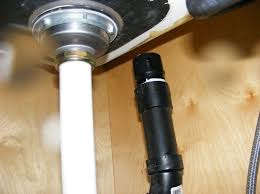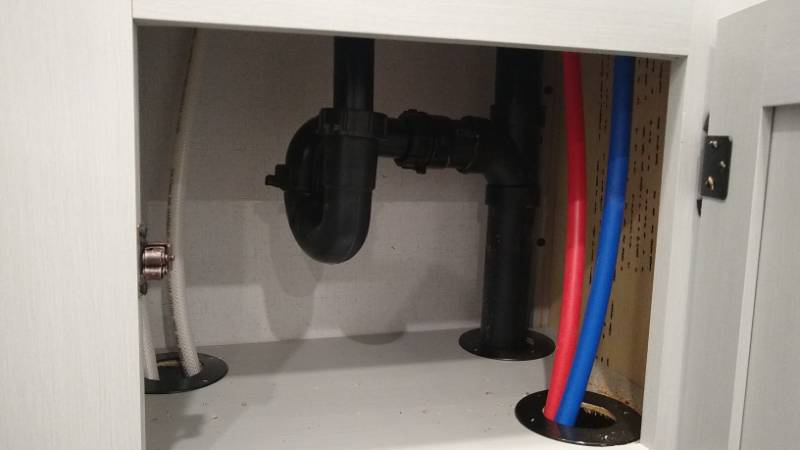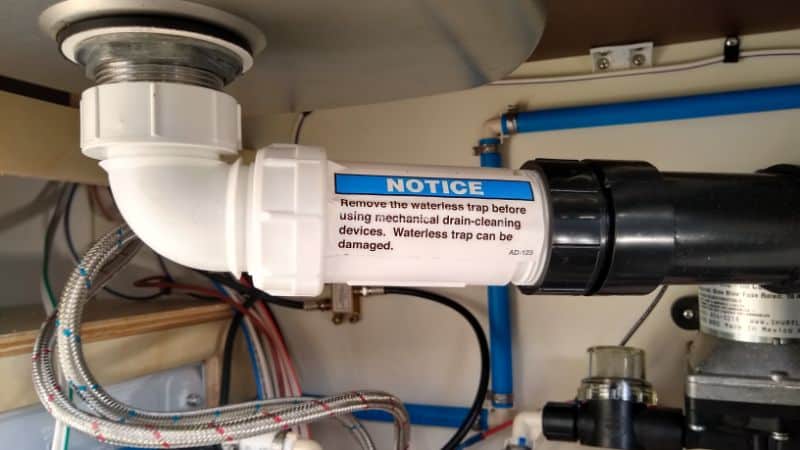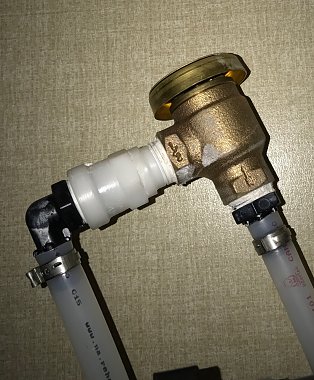You might not have heard of an Anti-Siphon Trap Vent Device (ASTVD). It’s not the sort of feature that gets published on a sales brochure. Here’s what it looks like:

Anti-siphon vents are also called air admittance valves or cheater vents. I’ll either call it an “anti-siphon vent” (for short) or an air admittance valve (AAV).
Most RV owners notice their air admittance valves for the first time not with their eyes, but with their noses. When an anti-siphon vent goes bad, it allows sewer gases from your waste tank to escape into the living area. (This is usually when an RV owner realizes that a gray tank can stink just as badly as a black tank!)
Let’s go over these vent valves: What they are, what they do, and how to replace them.
What’s the purpose of an RV anti-siphon vent?
To understand what an anti-siphon vent is, you need to know what a P-trap is. A P-trap is that U-shaped bend in the pipe beneath your sink. Water stays in that bend; it’s a liquid plug. That way, stinky sewer gases from decomposing waste don’t rise from the tanks, through the pipes, and into the living area. They stop at the P-trap.

The gases you might smell are a combination of methane, carbon monoxide, hydrogen sulphide, nitrogen and many others. They come from the decomposing organic batter. Just imagine the concentrated scent of hot roadkill.
If the P-trap is the hero, the anti-siphon vent/air admittance valve is the sidekick. An ASTVD allows air in – but not out – of the drain pipe. It’s a one-way mechanical valve. The air breaks the vacuum inside the pipe, which prevents a siphon from sucking water out of the trap.
Here’s a graphic showing how an AAV works, courtesy of Oatey:

Where are air admittance valves used in an RV?
ASTVDs are most commonly used for sinks, although there’s no reason you can’t use one for a tub or shower. They must be installed in an accessible location, which is good, because the cheap ABS ones on stock RVs are known to go bad fairly often.
Because AAVs are most commonly used for sinks, they usually lead to a gray tank. So any sewer gases escaping into the living area are from the gray tank. In many RVs, the only feature draining into your black tank is the toilet itself, which doesn’t require a trap.
Things to know about anti-siphon vents.
Anti-siphon vents are not required for waterless traps like Hepvo traps. Waterless traps have no water to siphon.

The only other design alternative to an anti-siphon vent is to extend the vent pipe all the way through the RV roof or upper sidewall!
Anti-siphon vents are often confused with vacuum breakers, sometimes because they are located in the same cabinet. But these are two totally different parts! Vacuum breakers look like this (see below), and their usual purpose is to prevent backflow in a blank tank rinse system.

If you notice particularly foul odors coming from your tanks, you should look into tank odor control products and fume extractors.
How to fix an air admittance valve?
Anti-siphon vents are pretty simple parts. They’re basically miniature spring-loaded plungers. There aren’t a lot of repair options.
Back in 2006, the RV Doctor gave us a few tips about fixing ASTVD/air admittance valves. He recommended lubricating the rubber membrane to restore the flexible seal or replacing the plunger spring.
Or just replace the thing. No special tools are required; it threads onto the end of the pipe by hand. A new one costs $5-$10. A higher-quality one, like a Tuuber, costs about $20. Most AAVs should be threaded onto the pipe using thread sealant. Refer to your manufacturer’s instructions.
You should replace an AAV with a model of the same or higher DFU rating.
AAvs are usually available in sizes 1-¼, 1-½ and 2 inches. 1-½ is the most popular size. You can use a 1-½” AAV on a 1-¼” pipe with an adapter.
Popular manufacturers include Oatey, Studor, Tuuber, and LaSalle Bristol. Residential ones have a reputation for lasting longer than the typical black RV ones.
Leave a Reply